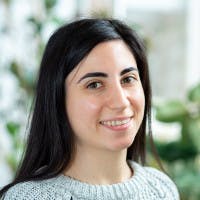Teaching Experience

On this page:
Teaching qualifications
🎓 2023 – 2024, University of Sussex, Postgraduate Certificate in Higher Education (PGCertHE) and Fellowship of the Higher Education Academy (FHEA)
🎓 2019 – 2020, University of Sussex, Associate Fellowship of the Higher Education Academy (AFHEA)
Supervisory positions (research lab-based)
Current, University of Sussex
- MRes Neuroscience: 1 student
- Junior Research Associate: 1 second-year student
Past (since May 2022), University of Sussex
- PhD Neuroscience: 1 student
- MSc Data Science: 1 student
- MSc Genetic Manipulation and Molecular Cell Biology: 1 student
- MSci Neuroscience: 3 students
- Bachelor of Medicine, Bachelor of Surgery: 2 fourth-year medical students
- BSc Neuroscience: 6 final-year students
- BSc Psychology with Neuroscience: 1 final-year student
- Junior Research Associate: 1 second-year student
- Foundation Programme (Medicine): 1 medical doctor
Academic teaching positions
Oct 2019 – July 2023, Associate Tutor for Life Sciences, Neuroscience, and Psychology, University of Sussex.
- Degrees taught on:
- Bachelor of Medicine, Bachelor of Surgery (BM BS)
- MSci Medical Neuroscience / Biomedical Science / Biochemistry / Genetics
- BSc Medical Neuroscience / Computer Science and Artificial Intelligence / Genetics / Biochemistry / Biology / Biomedical Science / Zoology
- BSc Psychology / Psychology with Neuroscience / Psychology with Clinical Approaches / Psychology with Criminology / Psychology with Business and Management / Psychology with Economics
- CertHE Psychology with Neuroscience
Courses taught
-
Advanced Techniques in Neuroscience
- Course level: Master's degree
- Teaching mode: seminars, coursework marking
- Total students taught: 43
- Typical class size: ~20 students
- Topics covered: ethics of human and animal research
-
Structure and Function in the Human Brain
- Course level: third year undergraduate
- Teaching mode: coursework marking
- Total students taught: 40
- Typical class size: 40 students
- Topics covered: brain organoids
-
Drugs, Brain & Behaviour
- Course level: third year undergraduate
- Teaching mode: test administration, exam invigilation
- Total students taught: 8
- Typical class size: 8 students
-
Techniques in Neuroscience
- Course level: second year undergraduate
- Teaching mode: lab practicals
- Total students taught: 45
- Typical class size: 15 students
- Topics covered: action potentials, mechanoreceptors, human visual system, motor units
-
Medical Neuroscience
- Course level: second year medical students
- Teaching mode: tutorials
- Total students taught: 45
- Typical class size: 15 students
- Topics covered: synaptic transmission
-
Principles of Neuronal Function
- Course level: second year undergraduate
- Teaching mode: tutorials, coursework marking
- Total students taught: 19
- Typical class size: 6-7 students
- Topics covered: signalling by neurons and synapses, neurotransmission and information coding, nervous system plasticity, neurodevelopment
-
Brain and Behaviour
- Course level: second year undergraduate
- Teaching mode: seminars, coursework marking
- Total students taught: 158
- Typical class size: ~25 students
- Topics covered: action potentials, synaptic transmission, neuropharmacology of anti-depressants and anxiolytics, neuroanatomy, brain development and neurogenetics, motor behaviour, initiation of voluntary actions, plasticity and learning, individual differences
-
Neuroscience and Behaviour
- Course level: first year undergraduate
- Teaching mode: seminars, coursework marking
- Total students taught: 46
- Typical class size: 23 students
- Topics covered: mechanisms and functions of behaviour, basics of neuroscience and ethology
-
Physiology and Disease
- Course level: first year undergraduate
- Teaching mode: seminars, coursework marking
- Total students taught: 109
- Typical class size: 20-35 students
- Topics covered: control and regulation through nervous, hormonal and other homeostatic mechanisms, from cellular and molecular levels, to the major organ systems
-
Cell Biology
- Course level: first year undergraduate
- Teaching mode: lab practicals
- Total students taught: 120
- Typical class size: ~30 students
- Topics covered: microscopy, comparison of procaryotic and eucaryotic cells
-
Psychobiology
- Course level: first year undergraduate
- Teaching mode: seminars, coursework marking
- Total students taught: 196
- Typical class size: ~25 students
- Topics covered: synaptic neurotransmission, hormonal actions, intracellular electrical processes, biological basis of emotions, homeostatic and non-homeostatic peripheral and central mechanisms underlying drinking and eating behaviour, learning and memory, evolutionary adaptation and selection
